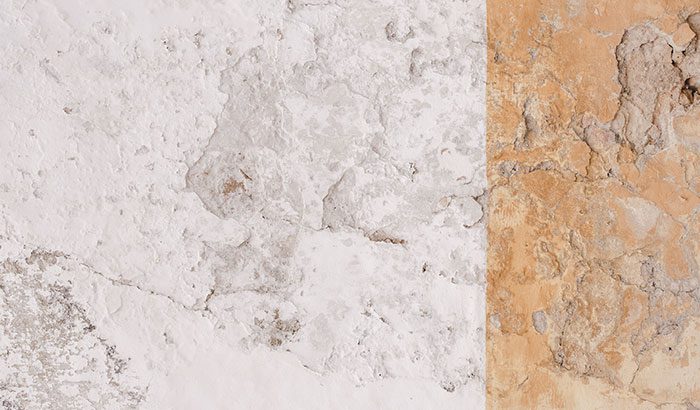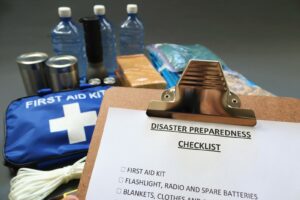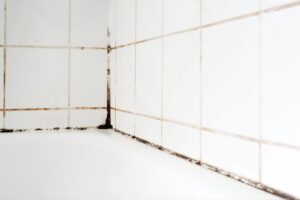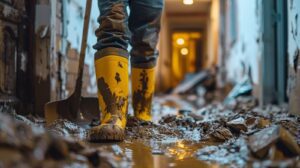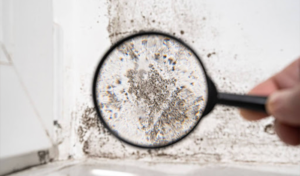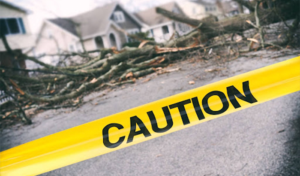If mold damage is in your home, should you still live there?
In short, if you have an extensive mold problem, you should only be staying in your home once the mold has been taken care of. Small amounts of mold, like mold in an isolated area, won’t cause too much harm. However, if there is enough mold to trigger an “allergic” reaction, you should probably leave your home until it is addressed.
No doubt you’re asking this question after an unfortunate discovery about mold in your home. Staying somewhere else is a hassle and can be expensive. Here are some things to consider to help you decide if you should stay in a house with mold.
- Do you have underlying lung or heart problems?
- Are you allergic to mold?
- Are you and members of your household constantly sick?
- Is there mold in multiple rooms?
- Does the mold cover large sections of your walls, floors, or ceilings?
If you answered yes to any of these questions, you would probably want to move out of your home until you can address your mold problem.
Health Effects of Mold Damage
It is difficult for science to make solid conclusions about mold exposure. Mold is everywhere. It covers all the surfaces we eat on, floats in the air we breathe, and when the environment is just right, it takes root and blossoms.
Can it harm your health? The general answer is yes, mold can harm your health. However, the dangers of mold damage are more pronounced among those with underlying conditions. For example, respiratory problems will be more common in those with asthma and allergies; mold can likewise cause infectious diseases in those who are immunocompromised.
Some varieties of mold are toxic and can produce harmful chemicals. These types of mold create toxins that can harm your nervous system and brain, causing motor skill issues and memory problems.
Studies are finding that excessive mold exposure can increase the risk of asthma and similar respiratory illnesses. Overall, the case for living with mold seems to lean more and more toward mold growth being toxic to human health. However, there continue to be studies about mold’s negative impact on the human body.
The most common health response to mold feels more like a persistent cold than anything substantial. Mold is known to cause symptoms such as:
- Stuffy/runny nose.
- Wheezing.
- Coughing.
- Tightness of chest.
- Irritated eyes.
- Irritated skin.
If you live in a home with significant mold damage, you should evacuate the house until the damage has been eradicated.
Living in your home leaves you, at best, constantly feeling under the weather and, at worst, can cause respiratory disease.
The EPA suggests that if the mold problem in your home is less than 10 square feet, you should be good to stay in your home while you address the mold problem. But, more than that, you should consider temporarily relocating.
Effects of Mold on Your Home
Apart from the health effects, other reasons will make you want to remove mold from your home as soon as possible.
Mold and other fungi play an essential role in our ecosystem. They feed on organic matter and break it down into usable nutrients for plants and animals to use. So if there is mold growing in your home, that mold is doing what it was born to do, break down your home.
Leaving mold damage in your home will begin to decompose the very walls and ceilings that keep you safe. Of course, complete decomposition takes time, but if you wait to address the root effects soon, you might find yourself living in a structurally compromised home.
How Do I Clean Up Mold Damage in My Home?
Mold can be treated with at-home solutions. Most of the chemicals you need to treat mold are probably already available in your home. Here are a few things you can do:
Bleach — Most mold damage can be fixed with a bleach and water solution. Bleach is a biocide, which means it can destroy living organisms. The chlorine in bleach destroys living organisms and evaporates in a toxic cloud. Be sure to wear protective equipment!
Vinegar — Vinegar is very acidic, which makes it an outstanding cleaning chemical. Vinegar is less potent than chlorine bleach, necessitating a longer waiting time after application before you can confidently scrub the mold away without worrying about regrowth.
Hydrogen peroxide — This chemical is like water but with an extra oxygen molecule. The extra oxygen molecule pairs with the mold and kills the growing mold cells.
Mold and Shower Cleaners — Most mold and shower cleaners use chemicals that use oxidation, like hydrogen peroxide. These chemicals and a scrubbing brush can help remove mold and other fungi from hard-to-clean surfaces.
Avoiding Mold
An old adage says, “an ounce of prevention is worth a pound of cure.” That holds for mold damage as much as for anything else.
There are some reasonably simple practices you can do to moderate mold growth in your home. They are:
- Keep your home dry — If you live in a humid area near a lake or a region frequented by rain, you’ll want to monitor your home’s humidity level and keep it under 50%. The higher it is, the more mold thrives.
- Do routine mold sweeps — Mold thrives in moist, dark, and warm environments. Some of the most common places it can be found are in your bathrooms and kitchen. Be sure to monitor these areas for water saturation and mold growth.
- Check water connections — The most mold-prone places in your home will be near your plumbing. Make sure your plumbing system doesn’t have any leaks. Persistent water problems will give mold an optimal environment to spread.
Cleaning Mold Damage with Total Fire and Flood Restoration
If you are trying to clean mold damage and are having a hard time getting it all and keeping it at bay, we can help.
We specialize in repairing homes damaged by fires, floods, and mold. Contact us today to have us get started on your mold restoration projects.

